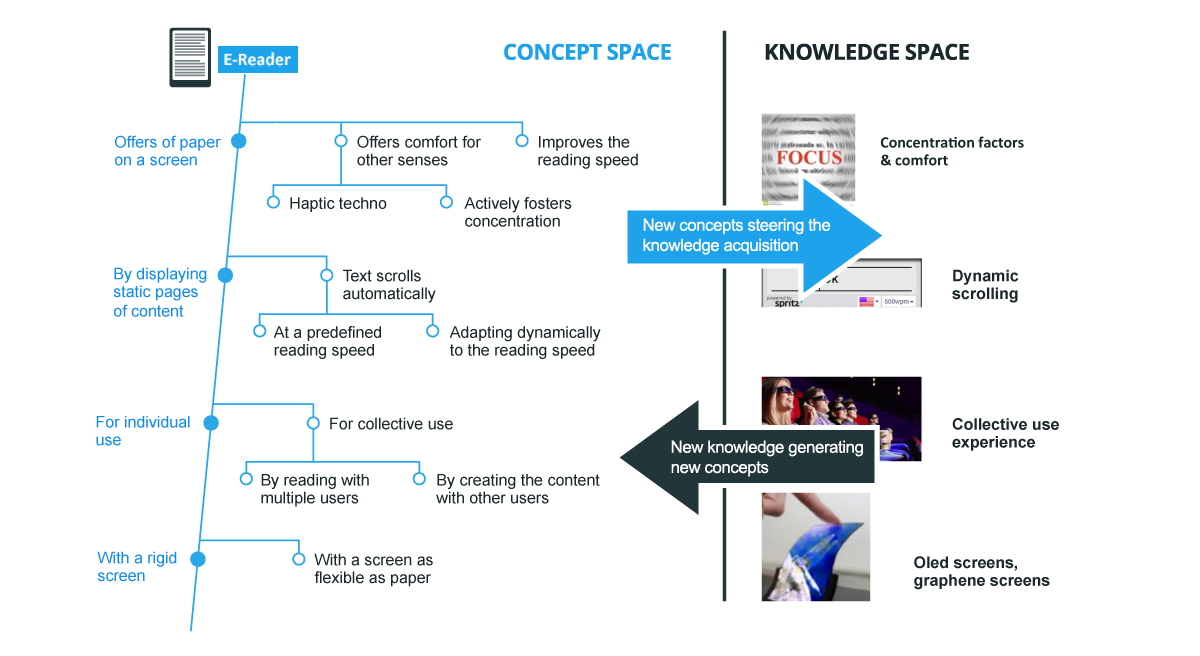Innovations and inventions were considered for a long time as a mysterious phenomenon. In the 90’s, Armand Hatchuel, Benoît Weil and their research team discovered that these activities could be explained and modeled; they named them “innovative design”.
C-K theory was born.
What is C-K ?
C-K theory describes and explains the reasoning of a designer as he thinks of and designs a new object – a new product, service, or process. In addition to its explanatory power, this theoretical framework provides powerful generative mechanisms to overcome cognitive obstacles, thus improving our ability to innovate.
Here, you will find an overview of this theory.
C-K theory relies on the interaction between two spaces : the Concept and the Knowledge spaces.
THE C-SPACE
The map of all possibilities
This is the space where you can imagine and explore new concepts, which can sometimes seem impossible, crazy or insane.
Contrary to what one might think, this space is very structured: ideas are broken down and represented in the form of a concept tree.
THE K-SPACE
The knowledge library
This is the space where you put all the knowledge you use or need to imagine or design new concepts.
Since a new idea never comes from nowhere: it is a combination of things you know, you have seen, read or heard.
In the C-space, this formalism makes it possible to represent various ideas in a form of tree where all the ideas are connected to the initial concept forming a tree-alike structure. This structure helps to identify fixations effects that limit our ability to generate truly novel ideas.
The K-space is an enabler to better manage the knowledge available at the beginning of exploration and reveal knowledge elements that might be hidden. This space is expandable as new truths may appear in it as an effect of the design process. Each time you add new knowledge to your “library”, you increase your ability to generate new ideas !
Innovate is to play in both spaces.
Once the designer imagines something new, he creates new concepts – expanding the C-space and he activates simultaneously new knowledge – expanding the K-space. These expansions are complementary : a new knowledge provokes the identification of new concepts and elaboration of new concepts results in the search process to acquire new knowledge.

